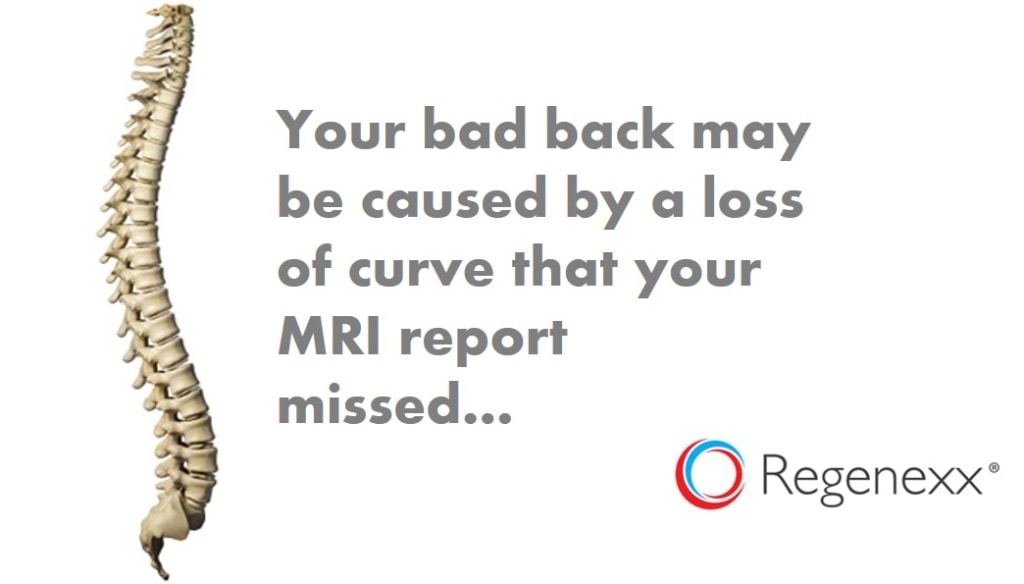Is There a Bad Back Posture? Do You Have Loss of Curve?
Out of the hundreds of MRI reports I see every year, very few of them have a word written about the state of the low back curve. Despite this, many studies show that losing the normal curve in the low back is a big deal. Essentially that a bad back posture is a real thing. Now several studies show that loss of the normal curve is associated with degenerated low back discs.
Most patients don’t know that the curves in their back and neck are critical. Your neck curve faces to the back, this is balanced by the opposite curve in your upper back, and this is balanced by your low back curve that sits in the same direction as your neck. These curves distribute weight between the disc in the front and the facet joints in the back part of the spine. They’re necessary for normal function of your spine and core and when they get out of whack, certain parts of the spine get overloaded. For example, losing the curve in the low back causes more weight to be distributed to your discs, which are the shock absorbers in the front of the spine.
The first new study looked at 38 patients with severe low back pain and no pain. More degenerative (read as “beat up”) discs were associated with less low back curve. This has been found in other recent studies as well. This makes sense, as the increased load caused by the lack of curve places more pressure on the disc. This change in spine position generally happens as we spend all day sitting with our arms out front staring at a computer screen or we stare at tiny little screens.
The upshot? Should you be concerned about lack of the normal curve in your back? Given that most radiologists don’t read this finding, how would you know? Meaning you may have this issue and your MRI report have missed it. In addition, few physicians are keeping up with the research that loss of curve is an issue. Hence, get your MRI films read by a physician who understands about the importance of normal curve. If you have this problem, what can you do? There is a type of chiropractic care that has a good deal of medical research showing that it works by focusing on curve restoration. You may want to seek out one of those experts! Another way to treat this issue is by strengthening the ligaments in the back of the spine (supraspinous/interspinous ligament) through injection, which is an area treated as part of our Regenexx procedure for Degenerative Disc Disease (DDD).

If you have questions or comments about this blog post, please email us at [email protected]
NOTE: This blog post provides general information to help the reader better understand regenerative medicine, musculoskeletal health, and related subjects. All content provided in this blog, website, or any linked materials, including text, graphics, images, patient profiles, outcomes, and information, are not intended and should not be considered or used as a substitute for medical advice, diagnosis, or treatment. Please always consult with a professional and certified healthcare provider to discuss if a treatment is right for you.
